St. Gotthard Pass, Switzerland 7/13
The weather was finally looking like Summertime, so we took advantage of it to make a little mini-tour of places we hadn’t seen for a long time and some we had never visited. Driving south, our first destination was the famous Gotthard Pass. Historically the St. Gotthard Pass has played a critical role in the history of Switzerland and of Europe. There are tunnels and freeways now that make it easier, but really, the best way to see the Gotthard Pass is to drive the old cobblestone serpentine road called the Tremola (on the South side) that was built back in 1830. It replaced a path that was in use since 1200. We had followed this road twice before, once in our BMW, (The Ultimate Driving Machine), and again in a small motorhome for a story we researched for Motorhome Magazine. It’s a beautiful road. I did have to back up on a couple of corners, but there is very little traffic during the week.
At the top of the Gotthard Pass, we wild camped in front of the small lake. The second reason of our stop was to visit the new museum and display called SASSO SAN GOTTARDO. Back in 1942, during World War II, the Swiss realized they needed to protect themselves more effectively. Part of their goal was to save its core, Central Switzerland, should the Germans or the Italians decide to attack. High above on the rocky cliffs of the Gotthard Pass, (called Sasso da Pigna) an amazing maze of tunnels and caverns were dug in record time to house a small army and an array of artillery that could reach 15 km (the Italian border) away with accuracy. The fortification was active until 1998. The gun placements are still there and as a historical monument today, you can tour much of the existing facility.
The lower part has been converted to a fascinating themed Exhibition centered on Sustainability and how Water, Weather & Climate, Mobility & Living Space, Energy & Security relate to your day-to-day life. There are also giant crystals from the Planggenstock on display. Inside the mountain, the temperature is 18°C (64.4°F).
From the Exhibition, a 400-meter long tunnel takes you to a tramway (or 400 steps) that brings you up to the actual defense facilities including the big 15-cm, (6-in) guns, still poking out of the side of the cliffs. They are hard to spot from the outside even when you know they’re there. The 8,000 m2 (86,100 sq. ft./1.97 acre) facility including a small hospital was totally self-contained and capable of supporting itself for at least three months: Power, water, food and heat with no visible steam or smoke to the outside.
As the website explains:
A tour of the historic fortifications is an experience in its own right. It leads not through a museum, but rather through a completely preserved, real world from the past. You are literally entering history, and experiencing it as a concrete reality.
This journey through time will enable you to explore the roots of the values that, to this day, constitute the fundamental elements of the way Switzerland views itself: independence, cultural autonomy and self-reliance. The encounter with history highlights the historic distance to the answers of earlier times and, in so doing, adds an extra dimension to the themed exhibition, with its focus on the issues of today and tomorrow.
We could hardly believe that we emerged out of the tunnel five hours later!
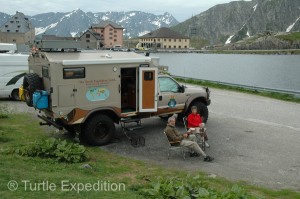
We had camped here before, so we knew exactly where to park overlooking the small lake at the top of the pass.
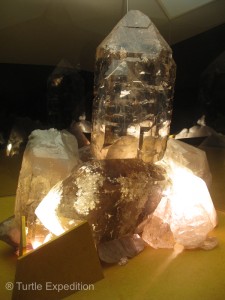
Among many exhibits inside the new museum, the Crystal Room holds some of the largest crystals ever found.
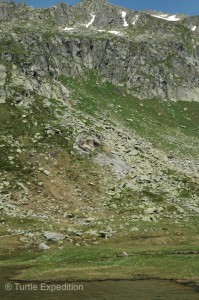
High on the sheer cliffs, artillery guns are still poking out of their self-contained fortifications.
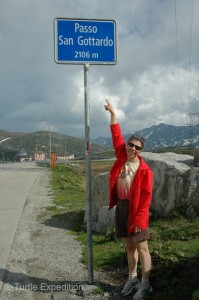
The Gotthard Pass was a 6,909-foot wall of rock that became the main north-south route into central Switzerland and remains so even today.
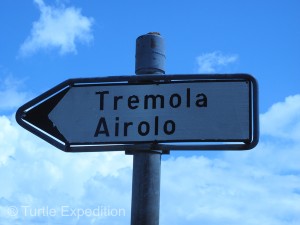
The historic cobblestone Tremola was a feat of engineering in 1830 and is still our favorite pass in Switzerland.
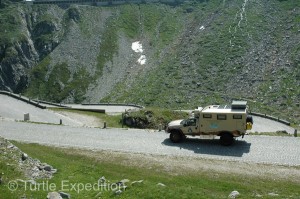
The famous Tremola Gorge is not for the faint of heart. The Turtle V had to back up on a couple of corners. Sorry to say, it has the turning radius of a battle ship.
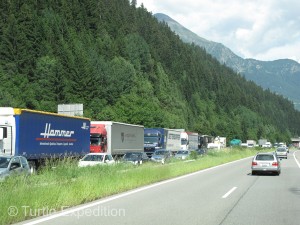
As the most important North-South route in Switzerland, traffic thorough the tunnel can be horrific. Glad we were headed the other direction.



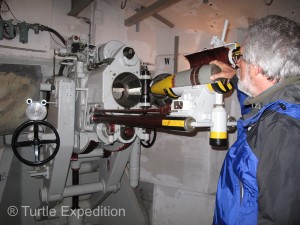
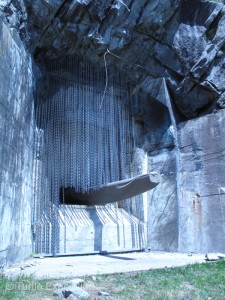
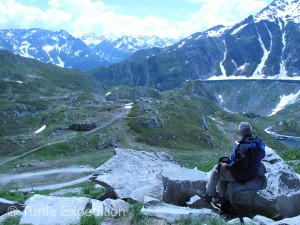
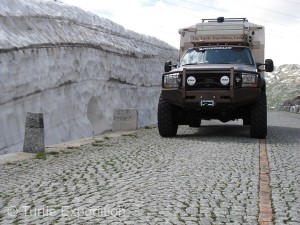
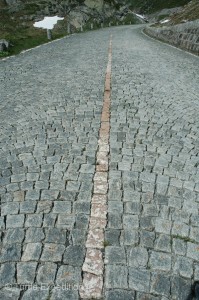
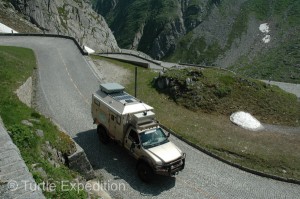
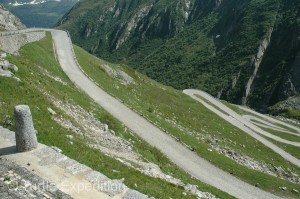





Leave a Comment